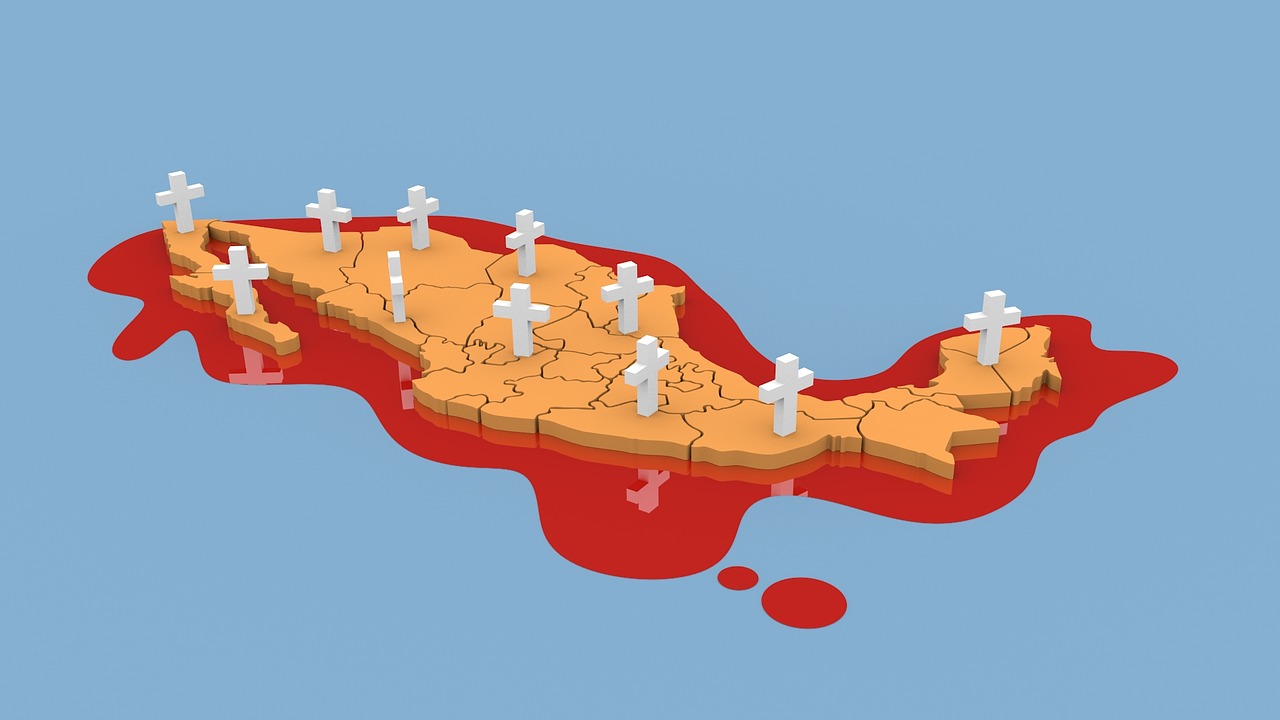How the Drug Menace in Mexico has turned it into a State of Violence
Mexico’s economy has struggled to provide viable business opportunities for its young population, this coupled with easily corruptible and ineffective law enforcement which is ill-equipped makes it hard to prevent and punish drug crimes and cartels. Furthermore, the incessant demand of narcotics by the US market makes the illegal trade a lucrative venture controlled by highly violent and competitive cartels that engage in numerous acts of violence such as kidnappings, murders, and beheadings to control the drug market.
For instance in May this year, Mexico registered more than 2000 murders, this is a record high for any single month since 1997. This underlines the country's continuing difficulties in dealing with the drug menace. Some cases included multiple homicides, and the state that was most affected by this new string of violence was the state of Guerrero. It is situated on Mexico’s west coast, an area synonymous with drug trafficking. The drug cartels in the country are competing for power and control of smuggling routes and production areas. Many of these cartels are also fragmenting leading to increased violence in the areas.
Also, the number of Murder investigations in the first five months of 2017 was 9,916 cases exceeding the previous year’s number by 30%. This has caused ripple effects in Mexico’s political arena where the popularity of Mexico’s President Enrique Pena Nieto has taken a slump. In the western state of Sinaloa rival cartels have been fighting for the control of the Sinaloa cartel since its leader, Joaquin El Chapo Guzman was extradited to the US in January. The infighting between the cartels has already resulted in 154 deaths the highest record in six years. Much of this killing is linked to the entry of the ever rising Jalisco New Generation Cartel also known as CJNG into Sinaloa’s territories.
Other states facing a significant increase in homicides in 2017 include Veracruz, a coastal state that reported 372 murder cases in March. This was an increase of 94% from the same period the previous year. The spike in violence is again attributed to the CJNG which is making inroads in the state due to its strategic importance in drug trafficking. The state of Chihuahua also saw a spike in violence in 2017 recording 384 homicides in March up by 78% in the same period last year.
Since Mexico started using its army to fight drug trafficking in 2006, a wave of violence has resulted in more than 200,000 people dead or been reported missing. Discoveries of bodies thrown by the roadside strung up on bridges as cautions to rival cartels, or buried in mass graves have become regular occurrences in Mexico. These acts have violence have spilled over to the US leading to populist sentiments to the need for a physical Mexican border wall. According to figures from the UN Department of Drugs and Crime, Mexico’s murder rate currently stands at 16 people per 100,000 which is lower compared to other states in the Caribbean and South America. El-Salvador’s murder rate is the highest standing at 81 people per 100,000. This is followed by Venezuela and Honduras which tie at 59 people per 100,000. Brazil’s murder rate is 25 people per 100,000 while that of Colombia stands at 24 people per 100,000. Although the gruesome nature of drug cartel violence in Mexico gets a lot of attention from the media and American government, these statistics show that the drug menace not only affects Mexico but other South American countries too. As a result, all these governments should pro-actively work to end the drug menace in their own countries and cooperate with the US government to rid the drug trade on the entire southern hemisphere.
